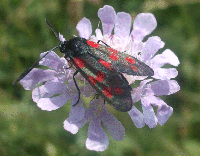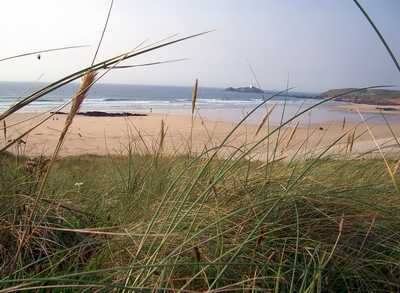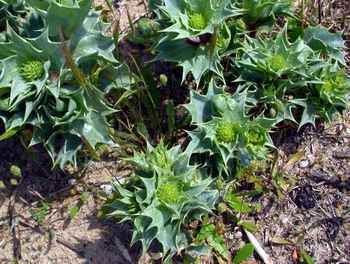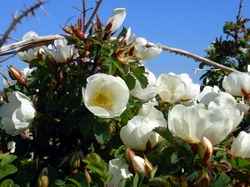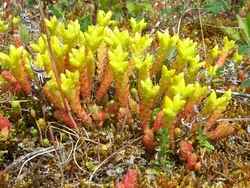When to Watch Wildlife |
J | F | M | A | M | J | J | A | S | O | N | D | Search |
|
Current wildlife highlights |
||
|
What's new on this site |
||
|
Wildlife calendar |
||
|
Plants and Animals |
||
|
Habitats |
||
|
Wildlife sites |
||
|
WWW links |
||
|
Guide Books |
||
|
||
|
© PMcS 2005 |
|
Sea and the seashore - sandy beaches |
||||||||||||
Whilst sandy beaches are many people's favourite places on the coast they
present an inhospitable environment for plants. Sand is usually low in
nutrients and organic matter, very free draining, often inundated with salty
water (upto twice daily) and as you get nearer the sea the sand moves under
the action of the waves.
Only higher up the beach, above the stand line, do these conditions become less severe and here specialised plants such as prickly saltwort, sea rocket, sea sandwort, orache species and sand couch can be found. Below the strandline a few crustaceans, molluscs (i.e. shell fish such as the razor-shell) and worms (e.g. the lug-worm and ragworm) can be found buried in the sand, feeding off the organic material that comes their way. Even with digging into the sand with a spade it can be difficult to bring up razor-shells. They are easily disturbed by any vibration and they rapidly withdraw. The last signs above the sand is a small jet of water sent up as it retreats. Another common sand dweller is the cockle. They can be extremely plentiful, living just below the surface of the sand in their millions. They provide an important food source for wading birds such as oystercatchers who probe for them with their long bills. On a much smaller scale the sand is in fact teaming with bacteria, protozoa and fungi, which can cling to sand grains but are designed to be able to move about in the spaces between and survive the rough conditions in which they live. Together with and diatoms and algae they form the basis of the food chain being eaten by larger animals and are the equivalent of grass to cows. Further up the beach where the sea does not reach and
detritus builds up from seaweed and other organic matter on the beach, the
wind blows the sand into mini mountains to make sand dunes. If these
are not colonised by the deep rooted and robust marram grass or if
they are disturbed too heavily they remain unstable and will continually
shift and reshape in the wind. This is a very sensitive environment
and also a very harsh one for plants to grow in.
Where the grass cannot dominate in the shifting hollows (dune 'slacks') between the dunes, and away from the sea, a rich and colourful assemblage of specialist plants can be found. These are often drought tolerant, having fleshy or hairy leaves and stems and many grow low to the ground. Species range from the large burnet rose, orchids, sea holly, to diminutive thyme, vetches, stonecrop and foliose lichen and moss species.
|
||||||||||||
|
||||||||||||
|
|
||||||||||||
All images and text are copyright PMcS 2005
